Mexican poppy, prickly poppy
Argemone ochroleuca subsp. ochroleuca, Fam. Papaveraceae
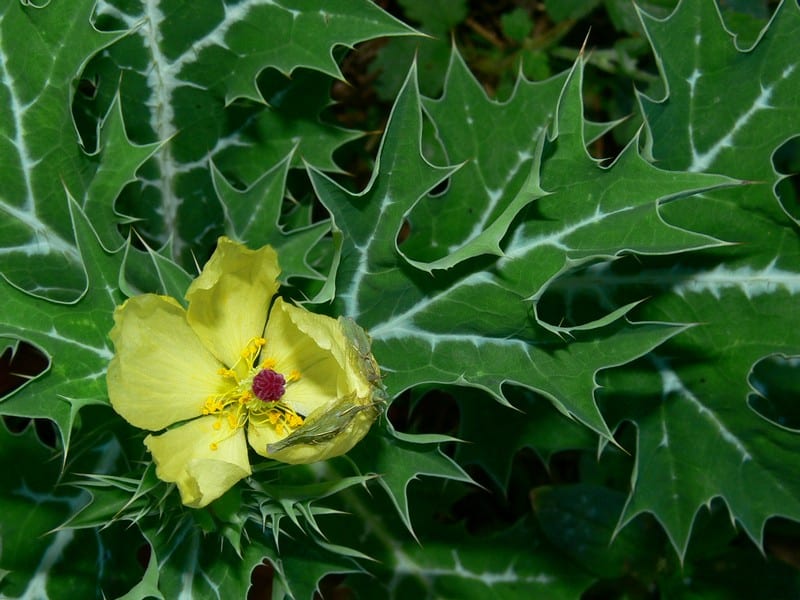
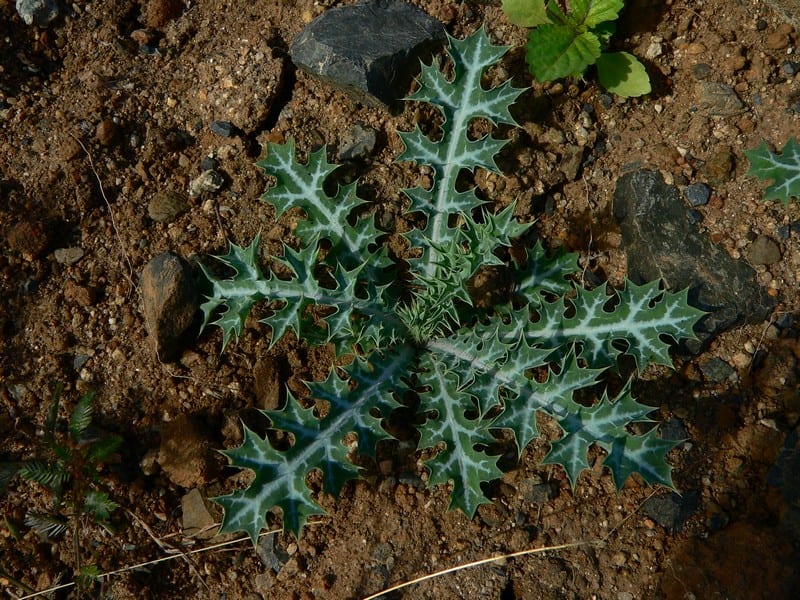
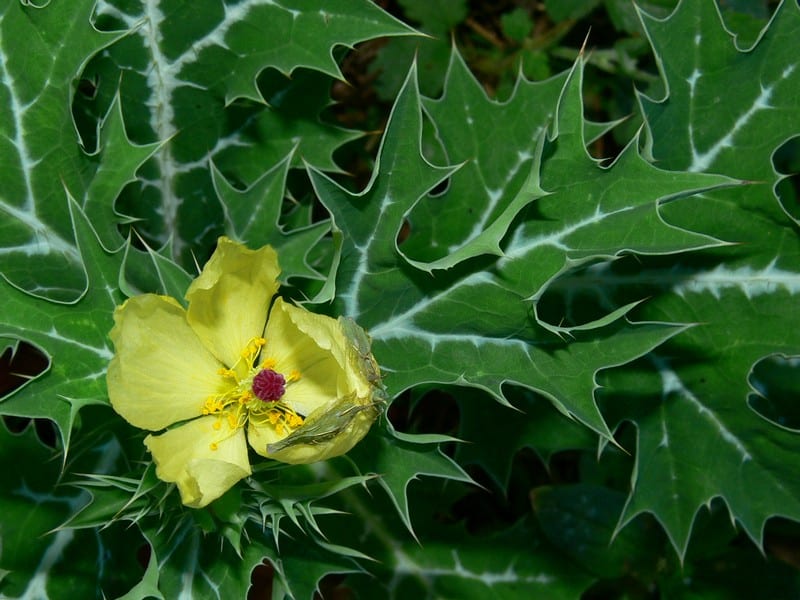
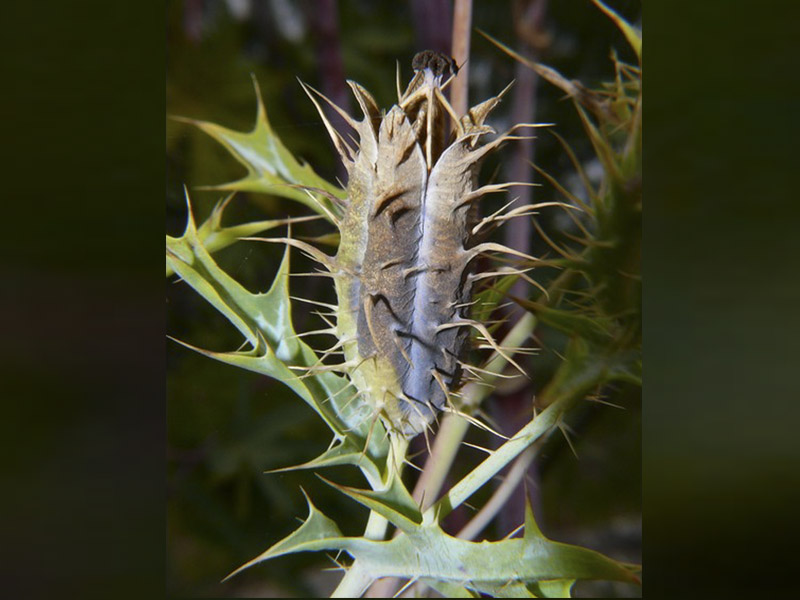
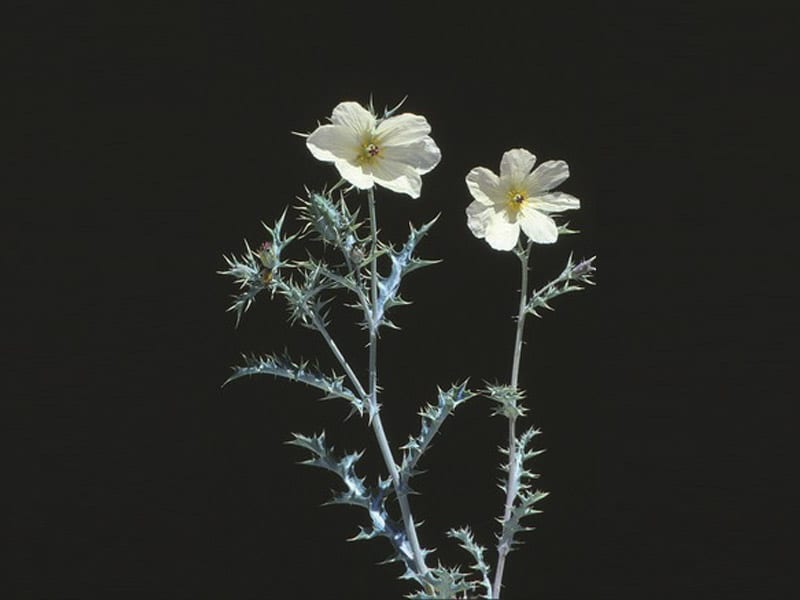
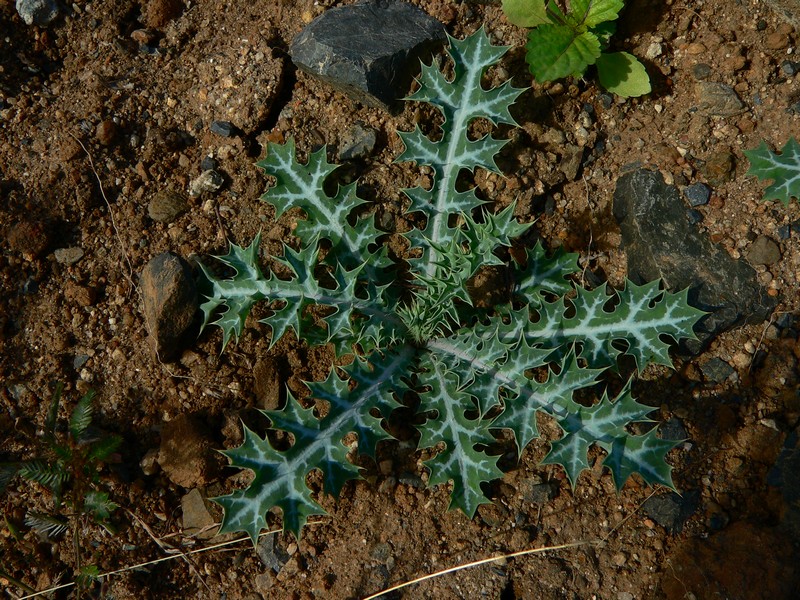






Prickly, thistle-like erect annual herb to 1m, stems pithy and covered with yellow prickles; yellow milky sap
| Weed Category: |
Other invasive plants Invasive plants that are not prohibited or restricted invasive plants, but are known to spread readily and cause negative impacts, within the region.
|
| Weed: | Yes |
| Form or habit: | Herb |
| Family: | Papaveraceae |
| Leaf: | Simple Basal A basal rosette when young, becoming alternate, margins wavy, deeply lobed and irregularly toothed with course spines at the tips; conspicuously bluish and blotched with white, 100-200mm long. |
| Flower conspicuous: | Conspicuous |
| Flower colour: |
Yellow |
| Flower description: | Pale yellow, 6-petalled, borne individually at ends of small branches, 30-70mm diameter. |
| Fruit conspicuous: | Conspicuous |
| Fruit colour: |
Brown |
| Fruit: | Dry |
| Fruit description: | Brown, spiny capsules, narrowly ovoid 25 x 10-18mm, filled with numerous brown or black globular seeds, 1.5mm in diameter, shed at maturity through valves at the top of the capsules. |
| Habitat: | |
| Distribution | |
| Food source for: | |
| Toxicity: | Toxic if ingested, irritant sap, toxic or irritant to domestic pets, toxic to native animals. |
| Origin: | Americas and West Indies |
| Notes: | Spread by: seeds spread by gravity, water or contaminated soil on vehicles and stock; plants breaks off at base and are blown long distances helping to spread seed. Invades/threats: seasonal watercourses, disturbed areas. Competes with native species. Notes: another species of Mexican or prickly poppy (A. mexicana) is very similar but apparently rarely occurs in this area. It has bright yellow flowers, usually greener leaves and its buds are sub-spherical as opposed to oblong in A. ochroleuca subsp. ochroleuca. Mexican poppies can cause injury due to their spiny nature, all parts reported to be toxic, can contaminate hay and pasture seed. Environmental weed. |
| Information sources: | Mackay Regional Pest Management Group (2018) Weeds of the Mackay Whitsunday Region Second Edition. |